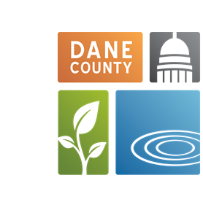
Improvements to natural resources provide ecosystem services or benefits to the environment and people. Our Ecosystem Services Initiative tracks the benefits our projects have on the health of local watersheds. These benefits overlap with climate goals to reduce greenhouse gas emissions and improve flood resilience. The initiative will identify, document, track, and report on projects targeting the areas below. Data will be shared via an online platform.
Phosphorus abatement involves implementing conservation practices on the land to reduce the amount of phosphorus running off into nearby surface waters. An example practice includes planting a cover crop which can reduce erosion and help prevent soil, phosphorus, and other nutrients from running off during rain events. Phosphorus reductions are calculated using appropriate tools and models based on the conservation practice being implemented. Reductions are reported in pounds of phosphorus.
Climate mitigation refers to actions taken that reduce or prevent emissions of greenhouse gases into the atmosphere. Perennial cover, like prairies or trees, have the ability to take carbon out of the atmosphere and store it in plants or in the soil. We will use tools and collected soil samples to calculate and measure changes over time. Results will be reported as metric tons of CO2 equivalent.
Runoff Infiltration is the amount of water that soaks into the soil instead of running off; it is measured after the implementation of a conservation practice designed to reduce runoff. An example practice that increases infiltration is a water and sediment control structure (basin). This structure holds water on the landscape and gives it more time to infiltrate slowly underground instead of running off quickly in a storm. This reduces soil erosion, improves water quality, and reduces the risk of flash flooding. Runoff infiltration is calculated using conservation practice specific models and is reported in cubic feet of water.
Stream restoration includes the improvement in the chemistry, physical condition, and/or biology of a stream. Examples of stream restoration projects include: stabilizing eroding streambanks; installing trees, rock, or other fish habitat structures; re-meandering straightened channels; and narrowing the stream to provide greater velocity and depth. Development of a Stream Quantification Tool is currently underway that will quantify either the positive or negative impact of a project. Stream restoration will be reported as change in functional feet.
Wetland restoration includes the improvement in the chemistry, physical condition, and/or biology of a wetland. Wetland restoration can include a number or projects, including the removal of drain tile, filling of drainage ditches, creation of berms and shallow ponds, and/or seeding of native wetland plants. A Wetland Quantification Tool will be used to quantify either the positive or negative impact of a project. This will be reported as an Index - the more positive the number, the greater the improvement.